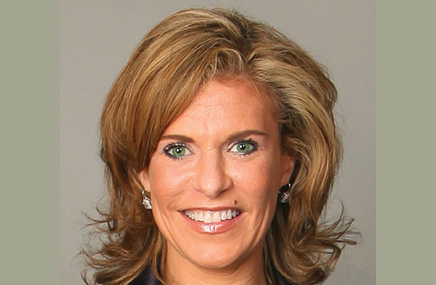Healthcare-first agencies aren’t usually in the business of commemorating unofficial milestones, or even celebrating them privately. But if anyone had the right to crow in 2011, it was Hobart Group Holdings. Over the course of a year, the company more than doubled its headcount—from 50 to 108—and opened a third agency under the HGH banner (Hobart Core in Chicago, which joins Hobart Forte in New York and The Hobart Group in New Jersey). And according to Lisa Bair, founder and chief executive officer of Hobart Group Holdings, more good news is likely to follow for the agency in 2012: after ending 2011 with a shade under $18 million in revenue, the company is on pace to generate $30 million in 2012.
All of this is to say: Hobart had a pretty OK year, even as Bair underplays it when asked to comment. “What I’d say is that a lot of things broke really well for us,” she says. “We’re in a good position in the marketplace.”
That position is defined by a strict focus on the payer-marketing space. Years ago, Hobart rooted itself firmly in the specialist camp, rather than attempt to compete with generalists that were five times its size. “Affordable access—that’s where we’ve gotten our traction and that’s where we think the industry is headed,” Bair notes. “We’re not going to start doing consumer marketing or provider marketing. We know who we are.”

That single-mindedness led to Hobart’s three major wins of the last 12 months. Pharma giants Astellas, Baxter and Sanofi tapped the company as their payer-marketing AOR. Combined with Hobart’s continued work for Lilly—which handed over additional brands to the agency during 2011—the Astellas and Baxter wins prompted the opening of the agency’s Chicago outpost. “We needed client coverage in those areas. Being in front of the client really cements those relationships,” Bair says, adding that Hobart is planning to use the new Chicago office “as a gateway to the West Coast.”
To head the office, Hobart hired Troy Koch, one of two Humana veterans who were added to staff in upper-level posts this year. The other was Dan Vanderpoel, who joined the firm’s strategic services group. “We’ve maxed out our space in New Jersey and New York, so we’re going to focus our growth on Chicago,” Bair says. “It’s a commitment to our clients there and a commitment to the region.”
Of course, with the recent success comes an expected headache: managing the accompanying growth, while maintaining a high level of client service and producing solid, thoughtful creative. Bair reports no problems to date, owing to a longstanding focus on company culture.
“That’s the question that you can’t really answer until you’ve already proven you’re up to the task: How do you continue to deliver that quality creative and innovate when there’s so much going on?,” she says. “I think the one thing that is unifying across Hobart companies is that attention to what’s going on within. We’ve got our guiding principles and we’ve got our monthly awards. It’s always top of mind: This is the way we measure success and this is the way we evaluate our own performance.”
As for building on Hobart’s recent successes, look for the company to form an alliance or two around payer data analytics—the development of what Bair calls “breakout market offerings.” A west coast office could be in the cards as well, should client demand continue to surge.
From the July 01, 2012 Issue of MM+M - Medical Marketing and Media







